5 Mistakes to Avoid When Creating Sensory Pathways for Kids
The Journal of School Health recently published a comprehensive review of the pandemic's effect on kids’ exercise levels.
The results?
34% of children aged 3-13 experienced a significant reduction in physical activity, and sedentary behaviors skyrocketed by 82%!
The Children & Schools journal noted that the pandemic put children at a “risk of negative mood, anxiety, attention difficulties, and social challenges.” These challenges are also associated with deficits in social-emotional attention in children.
In plain English, this means we really need to get our kiddos to move, and we need to do it yesterday.
This is where sensory pathways for kids come in. They provide fun, easy, and budget-friendly ways to encourage students to be active and use their movement-based senses.
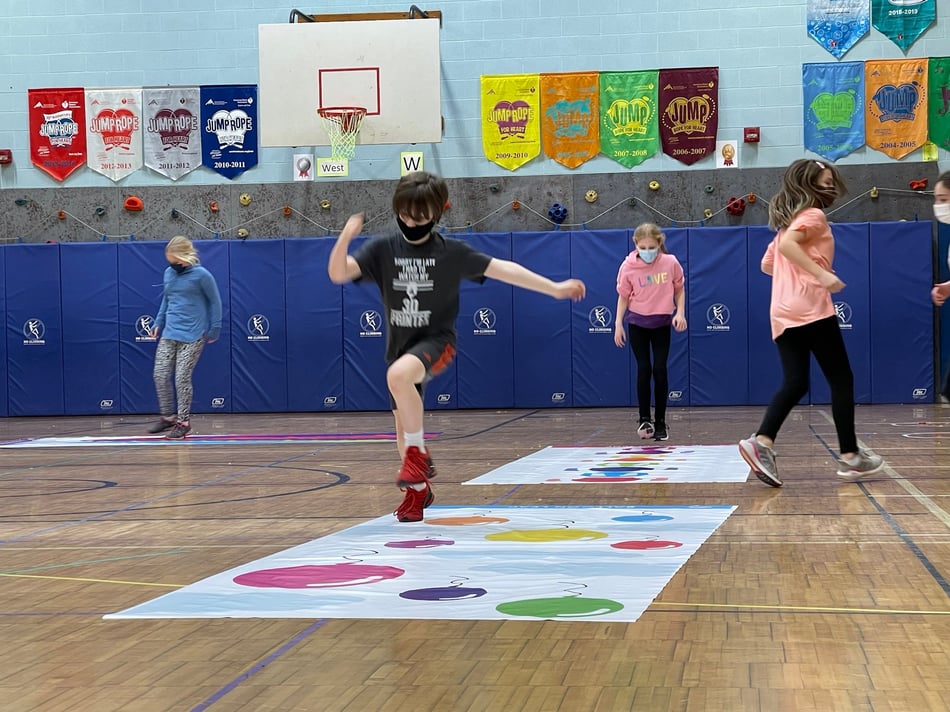
But, for these tools to work, you must set them up properly. In this article, we explain five common mistakes schools and educators make when building sensory pathways for kids — and how to avoid them.
Building Sensory Pathways: The Importance of Proper Set-Up
Sensory pathways aren’t about getting kids to move randomly. The idea is to facilitate highly targeted, guided series of movements that get kids to move and:
- Stimulate sensory processing
- Enable ample practice of basic motor skills
- Help kids build self-confidence and a healthy relationship with physical activity
Think of sensory pathways as yoga flows or dance routines. They have a specific goal and inner logic that starts simple, gradually increases in complexity, and winds up nice and slow. To get the most benefit out of your sensory pathways, their set-up must reflect this.
What NOT to Do When Building Sensory Pathways for Kids
1. Not Understanding Fundamental Motor Skills
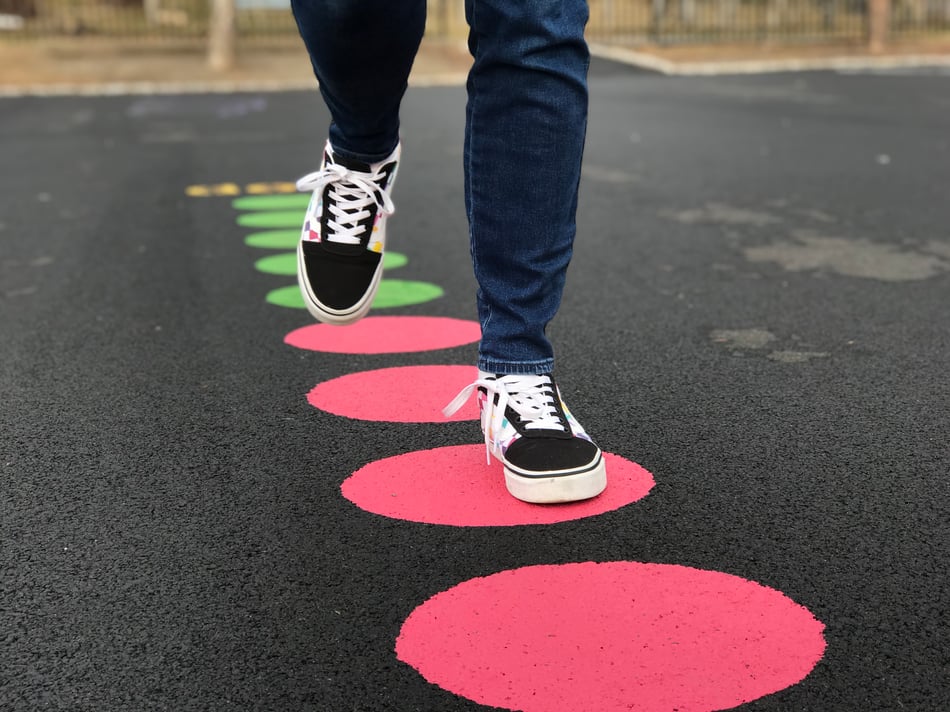
A critical mistake we often see in sensory pathway YouTube videos is a lack of knowledge of fundamental motor patterns and skills. These include:
- Stability skills: Twisting, turning, bending, reaching
- Locomotor skills: Running, jumping, hopping, skipping, leaping, sliding
- Object control skills: Catching, throwing, kicking, striking
Basic motor skills are essential for later development. Children who don’t master these early often struggle with more specialized skills required in team and individualized sports.
Sadly, CDC data suggests that once a kiddo realizes they aren’t as proficient in sports as their peers, they often become more sedentary and solitary. Screen time increases while overall fitness drops. This pattern continues throughout life, leading to obesity, low cardiovascular endurance and muscular strength, and other health concerns.
That's why a good sensory pathway must engage a variety of locomotor skills, as well as stability skills that promote bilateral coordination (moving both sides of the body together) and core strength. It should also end with a yoga pose or mindful movement to provide an opportunity for self-regulation. If you throw some object control skills into the mix, even better!
2. Placing Elements Too Close Together
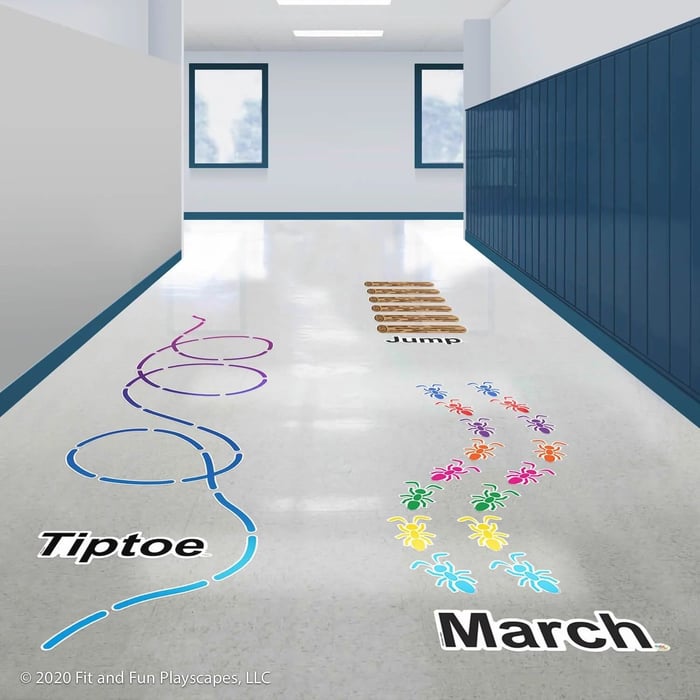 When planning sensory pathways for kids, consider both the space and the elements (sensory stickers or activities) that will go in that space. You don’t want to make your pathways busy and congested. And not every movement should be included to avoid overload.
When planning sensory pathways for kids, consider both the space and the elements (sensory stickers or activities) that will go in that space. You don’t want to make your pathways busy and congested. And not every movement should be included to avoid overload.
Patterns that are too close together may lead to collisions and injury. Keeping elements spaced out also helps promote mature running, jumping, and leaping patterns. This also enables you to add items such as cones, poly spots, and river stones to keep the pathway novel and dynamic.
3. Ignoring Vertical Surfaces
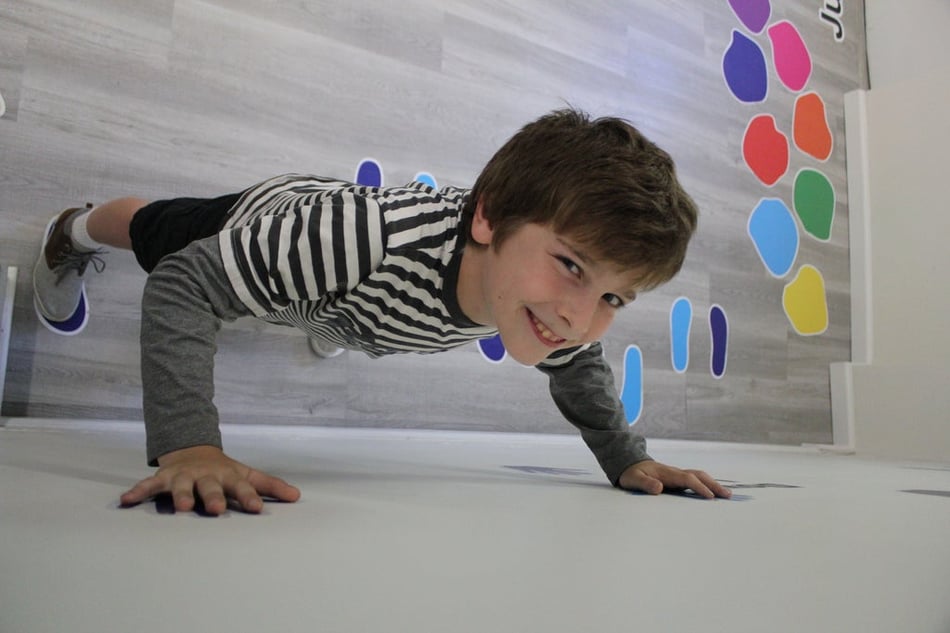 Sensory pathways aren’t just for the floor. If possible, go vertical. Capitalize on available wall space in school hallways by incorporating:
Sensory pathways aren’t just for the floor. If possible, go vertical. Capitalize on available wall space in school hallways by incorporating:
- Proprioception: Wall push-ups or having students write out the alphabet by pushing a ball against the wall
- Stability: Exercises that include twisting, bending, and reaching
- Midline crossing: Activities that promote midline crossing of the hands and feet while attending visually to the task
- Mindfulness: Yoga poses or emotional regulation stickers
- Self-affirmations: The child completes the pathway and says, “I did it!” into a mirror
4. Failing to Engage the Senses
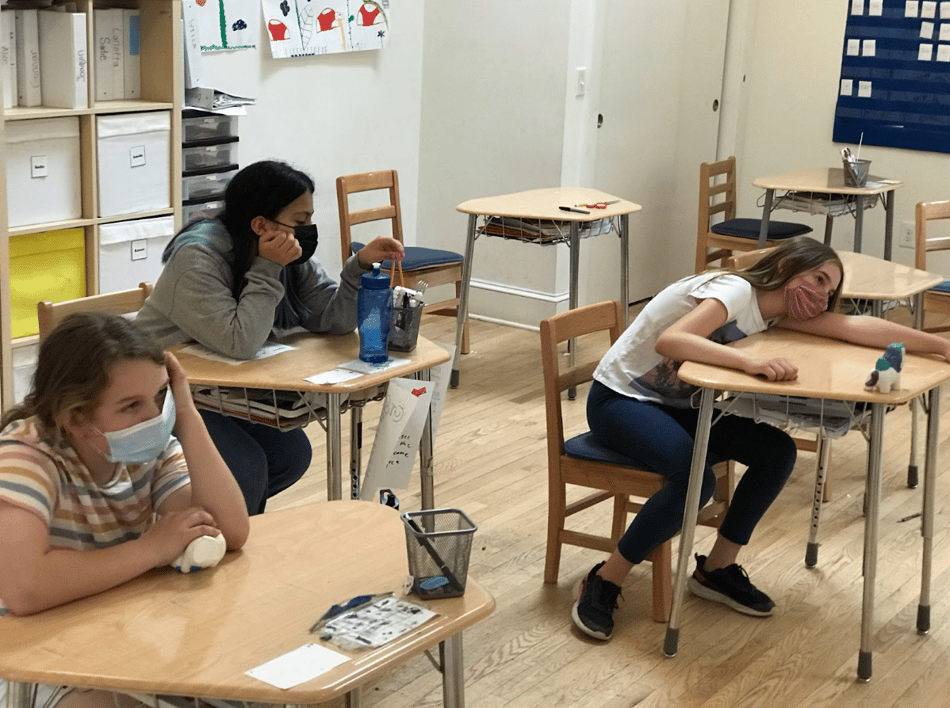 Believe it or not, many so-called “sensory” pathways don’t actually stimulate the sensory system.
Believe it or not, many so-called “sensory” pathways don’t actually stimulate the sensory system.
We have eight sensory systems that help us control and regulate our bodies throughout the day. These include the traditional five senses (sight, sound, taste, smell, and touch), which are enhanced by the vestibular, proprioception, and interoception systems.
To ensure that your pathway facilitates varied sensory experiences, include elements that engage the following systems:
- Vestibular: Balancing exercises and movements that improve bodily awareness
- Proprioception: Exercises that exert pressure on the joints like push-ups and squats
- Touch: Tactile elements that stimulate kids to touch them with their hands, feet, and bodies
- Visual: Engaging visual cues that help the child with the task and foster bilateral coordination and midline crossing
5. Putting Complex Movements at the Start
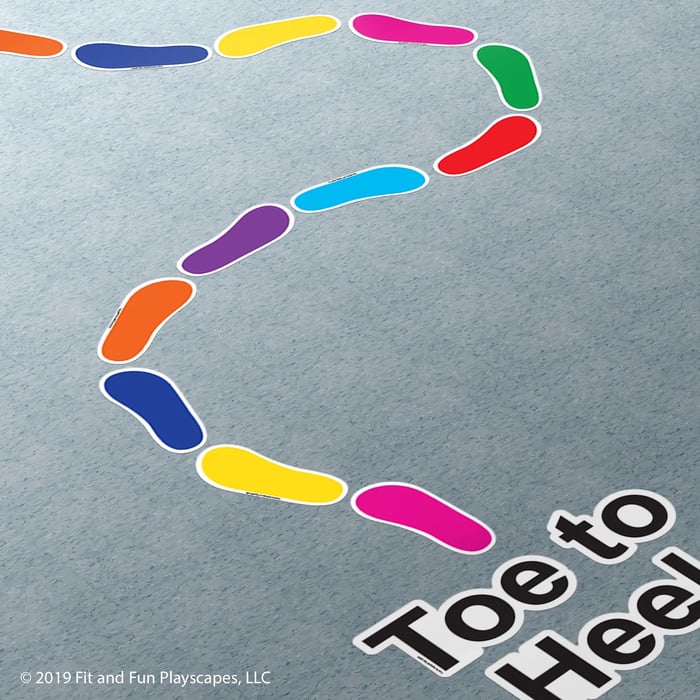
Crab crawls are a great workout. They are also a tad too challenging for some kiddos (to say nothing of adults!).
Just think about it: Would you embark on a sensory pathway if the very first exercise left you out of breath? Probably not.
Kids are no different and they want to engage with things they can succeed at. That’s why you should lower the barrier to entry and begin your sensory pathway with stimulating yet pretty basic movements.
A toe-to-heel pattern with some twisting or turning to promote stability is a great start but even simple stepping is good. You can add more advanced elements like lunges, planks, or sit-ups in the middle of the pathway. Think simple to complex (simplexity!).
6. BONUS: Not Incorporating Mindfulness
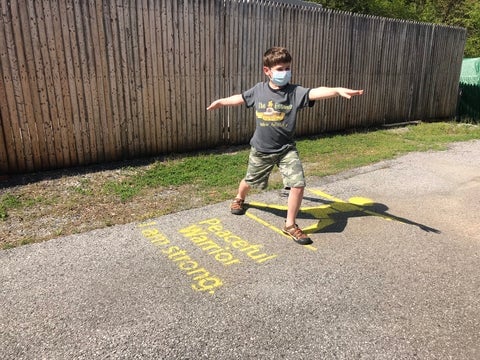 Don't forget to let your kiddos wind down when they complete the sensory pathway. Finish off with activities such as:
Don't forget to let your kiddos wind down when they complete the sensory pathway. Finish off with activities such as:
- Breathing exercises
- Mindful movements like yoga poses or deep stretches
- Self-reflection
- Positive affirmations
One of our favorite tips is to put a full-length closet mirror on the wall so kids can look at themselves as they pose or say, “Way to go!”
Need More Tips on Building Sensory Pathways for Kids?
Download our free Mega Guide to discover hundreds of other ways to get kids to move and get 10% OFF our Super Stickers®️, Sensory Pathways, Stencils, and Roll-Out Activities®️!



Leave a comment